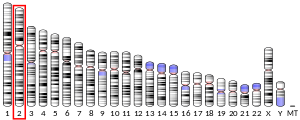
N-Myc

461318109ENSG00000134323ENSMUSG00000037169P04198P03966NM_005378NM_001293228NM_001293231NM_001293233NM_008709NP_001280157NP_001280160NP_001280162NP_005369NP_032735N-myc proto-oncogene protein also known as N-Myc or basic helix-loop-helix protein 37 (bHLHe37), is a protein that in humans is encoded by the MYCN gene. N-myc proto-oncogene protein also known as N-Myc or basic helix-loop-helix protein 37 (bHLHe37), is a protein that in humans is encoded by the MYCN gene. The MYCN gene is a member of the MYC family of transcription factors and encodes a protein with a basic helix-loop-helix (bHLH) domain. This protein is located in the cell nucleus and must dimerize with another bHLH protein in order to bind DNA. N-Myc is highly expressed in the fetal brain and is critical for normal brain development. The MYCN gene has an antisense RNA, N-cym or MYCNOS, transcribed from the opposite strand which can be translated to form a protein product. N-Myc and MYCNOS are co-regulated both in normal development and in tumor cells, so it is possible that the two transcripts are functionally related. It has been shown that the antisense RNA encodes for a protein, named NCYM, that has originated de novo and is specific to human and chimpanzee. This NCYM protein inhibits GSK3b and thus prevents MYCN degradation. Transgenic mice that harbor human MYCN/NCYM pair often show neuroblastomas with distant metastasis, which are atypical for normal mice. Thus NCYM represents a rare example of a de novo gene that has acquired molecular function and plays a major role in oncogenesis. Amplification and overexpression of N-Myc can lead to tumorigenesis. Excess N-Myc is associated with a variety of tumors, most notably neuroblastomas where patients with amplification of the N-Myc gene tend to have poor outcomes. MYCN can also be activated in neuroblastoma and other cancers through somatic mutation. N-Myc has been shown to interact with MAX. N-Myc is also stabilized by aurora A which protects it from degradation. Drugs that target this interaction are under development, and are designed to change the conformation of aurora A. Conformational change in Aurora A leads to release of N-Myc, which is then degraded in a ubiquitin-dependent manner. This article incorporates text from the United States National Library of Medicine, which is in the public domain.
